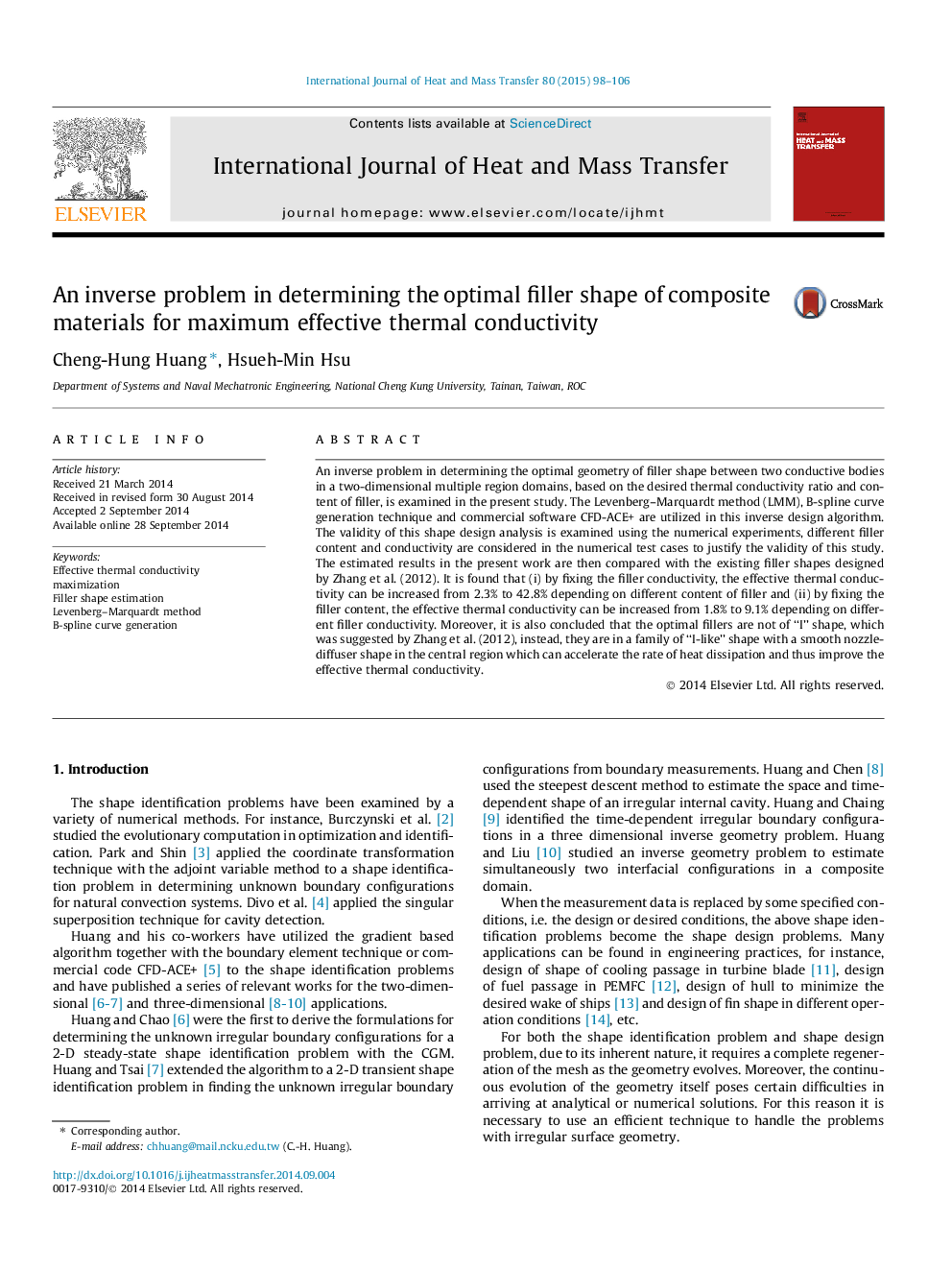| کد مقاله | کد نشریه | سال انتشار | مقاله انگلیسی | نسخه تمام متن |
|---|---|---|---|---|
| 657250 | 1458062 | 2015 | 9 صفحه PDF | دانلود رایگان |
An inverse problem in determining the optimal geometry of filler shape between two conductive bodies in a two-dimensional multiple region domains, based on the desired thermal conductivity ratio and content of filler, is examined in the present study. The Levenberg–Marquardt method (LMM), B-spline curve generation technique and commercial software CFD-ACE+ are utilized in this inverse design algorithm. The validity of this shape design analysis is examined using the numerical experiments, different filler content and conductivity are considered in the numerical test cases to justify the validity of this study. The estimated results in the present work are then compared with the existing filler shapes designed by Zhang et al. (2012). It is found that (i) by fixing the filler conductivity, the effective thermal conductivity can be increased from 2.3% to 42.8% depending on different content of filler and (ii) by fixing the filler content, the effective thermal conductivity can be increased from 1.8% to 9.1% depending on different filler conductivity. Moreover, it is also concluded that the optimal fillers are not of “I” shape, which was suggested by Zhang et al. (2012), instead, they are in a family of “I-like” shape with a smooth nozzle-diffuser shape in the central region which can accelerate the rate of heat dissipation and thus improve the effective thermal conductivity.
Journal: International Journal of Heat and Mass Transfer - Volume 80, January 2015, Pages 98–106
